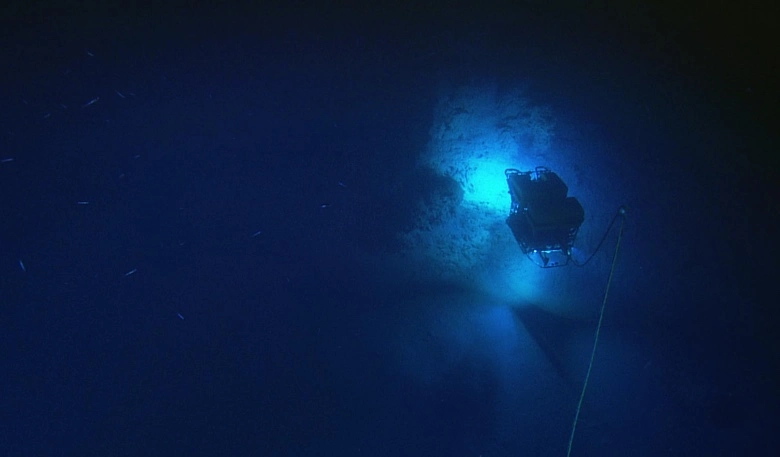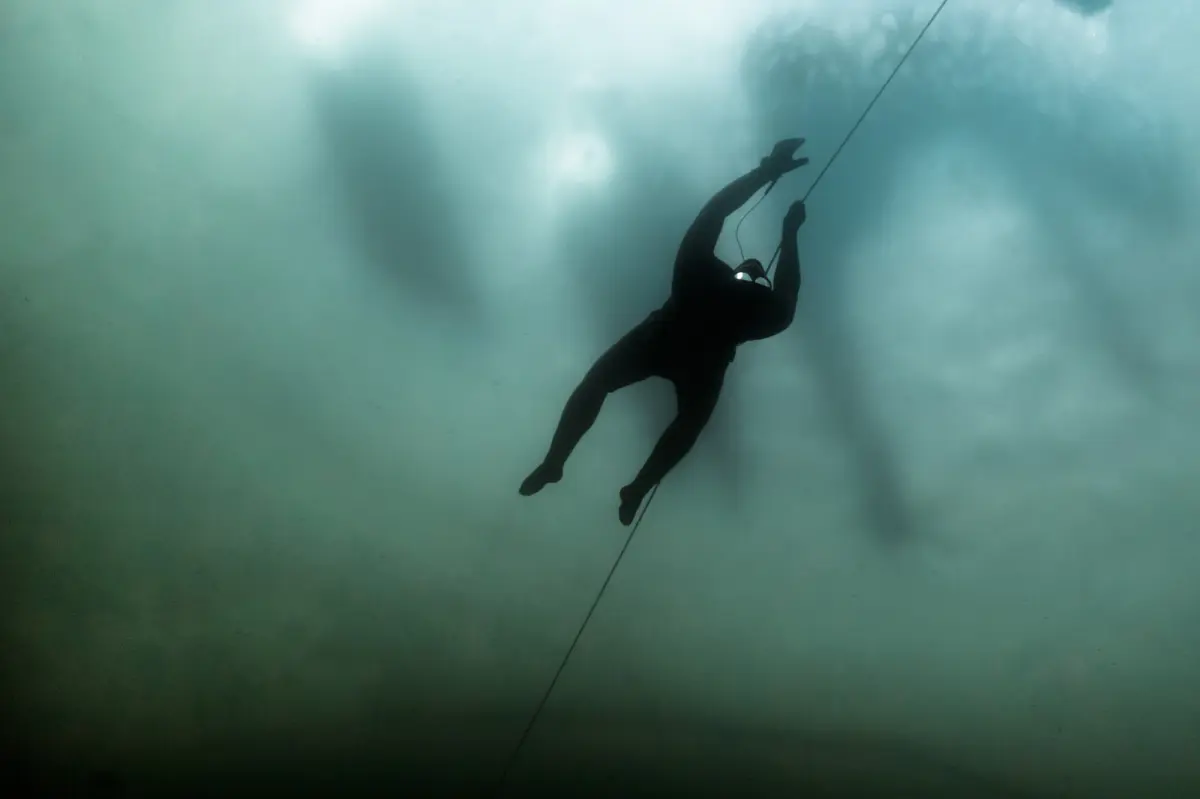How Deep Can Humans Dive Before Being Crushed By Pressure? Diving to the Limit
The maximum depth that humans can dive before being crushed by pressure largely depends on their equipment and expertise.
For recreational divers using scuba gear, the typical safe limit is around 130 feet (40 meters), where the pressure is about 4 times that of the surface. However, professional commercial divers can descend to approximately 1,000 feet (300 meters) with specialized equipment and training.
The deepest point reached by humans is the Challenger Deep in the Mariana Trench, at nearly 36,070 feet (10,994 meters), using advanced submersibles. At these extreme depths, the pressure is over 1,000 times greater than at the surface.
Beyond these depths, the pressure becomes too intense for human survival, and only unmanned submersibles can explore further into the abyss.
How Does Water Pressure Affect Deep-Sea Diving?

Water pressure increases with depth due to the weight of the water above. This phenomenon is a fundamental concept in oceanography and diving.
At the surface, the pressure is the same as atmospheric pressure, which is approximately 14.7 pounds per square inch (psi) or 1 bar. For every 33 feet (10 meters) you descend, the pressure increases by one atmosphere, equivalent to an additional 14.7 psi or 1 bar.
Water pressure has significant effects on the human body and equipment. As divers go deeper, they experience increased pressure, leading to physiological changes, such as nitrogen absorption and oxygen toxicity.
Effects on the Human Body
As divers descend, the increased pressure affects the human body in several ways. One of the most well-known effects is nitrogen narcosis, also called “rapture of the deep.” This condition occurs at depths beyond 100 feet (30 meters) when nitrogen, a component of the breathing gas, starts to have a narcotic effect on divers, leading to impaired judgment and decision-making.
To counter this, divers often switch to other gas mixtures that are less narcotic, such as heliox or trimix.
Additionally, oxygen toxicity becomes a concern as divers go deeper. At extreme depths, the concentration of oxygen in breathing gas needs to be carefully controlled to prevent seizures and other oxygen-related health issues. Divers must be well-trained to manage these factors and adapt to the changing pressure conditions.
Impact on Equipment
Water pressure also exerts a substantial force on diving equipment. For instance, scuba tanks and regulators must be built to withstand the pressure at various depths. As divers descend, their tanks compress, reducing the available air supply. Specialized equipment like rebreathers helps manage gas levels efficiently and prolongs underwater stays.
Pressure affects not only the gear but also the structural integrity of submarines and submersibles. These vessels have to be meticulously engineered with strong, pressure-resistant hulls to protect occupants from the immense pressure of the deep sea.
The Role of Buoyancy
To counteract the increasing water pressure during a dive, divers use buoyancy control devices (BCDs). By adjusting the BCD’s inflation, divers can control their position in the water column. Proper buoyancy management is essential to stay at a desired depth and to ascend safely without ascending too quickly, which could lead to decompression sickness.
What Are The Limits Of Scuba Diving And How To Dive Safely?
Recreational scuba diving typically involves exploring depths ranging from 18 to 130 feet (5 to 40 meters). These depths are considered safe for divers with basic certification, such as Open Water Diver. Beyond these depths, the risks associated with pressure-related issues increase significantly.
What Are The Factors That Restrict Scuba Dives
Air Supply: The primary constraint for divers is their air supply. As divers descend, the compressed air in their tanks is consumed more rapidly. Planning and monitoring air consumption are critical for safe ascents.
Decompression Limits: The deeper a diver goes, the more nitrogen is absorbed into the bloodstream due to the increased pressure. Decompression sickness (commonly known as “the bends”) becomes a concern, necessitating controlled ascents and safety stops to allow excess nitrogen to off-gas.
Nitrogen Narcosis: Beyond 100 feet (30 meters), divers may experience nitrogen narcosis, leading to disorientation and impaired judgment. This further limits the depth that recreational divers can safely reach.
Oxygen Toxicity: Extreme depths may also lead to oxygen toxicity, a condition where high levels of oxygen in the breathing gas become toxic. This poses a serious health risk and requires precise gas mixtures and careful monitoring.
Buoyancy Control: Proper buoyancy control is essential for maintaining depth and avoiding uncontrolled ascents. Divers must be skilled in managing their buoyancy to stay within safe limits.
Advanced Diving Certifications
For those who wish to explore greater depths, advanced diving certifications such as Deep Diver and Technical Diver are available. These certifications provide divers with additional training and knowledge to handle the challenges and risks associated with deeper dives. Technical divers, for example, can venture beyond recreational limits with specialized gas mixes and equipment.
What Are the Latest Advanced Diving Technologies for Deep-Sea Exploration?
Exploring the deep blue requires cutting-edge technologies that allow divers to go beyond the limits of traditional scuba equipment. These innovations enable divers to access greater depths, stay submerged longer, and explore the most challenging underwater environments.
Rebreathers
Rebreathers are a groundbreaking advancement in diving technology. Unlike traditional scuba systems that release exhaled air into the environment, rebreathers recycle and scrub the exhaled gas, removing carbon dioxide and replenishing oxygen. This process allows divers to stay submerged for extended periods and reduces the need for bulky tanks. Rebreathers are particularly beneficial for deep and long-duration dives, as they can help mitigate the risks of nitrogen narcosis and oxygen toxicity.
Mixed Gas Diving
For deep-sea exploration, mixed gas diving is essential. This technique involves using specialized gas mixtures, such as heliox (helium and oxygen) and trimix (helium, nitrogen, and oxygen), to replace standard compressed air. These mixtures reduce the effects of nitrogen narcosis and oxygen toxicity, making deep dives safer and more manageable. Technical divers, who have undergone advanced training, often use mixed gases to reach extreme depths.
Remotely Operated Vehicles (ROVs)
In the field of marine science and deep-sea exploration, remotely operated vehicles, or ROVs, are indispensable. ROVs are unmanned submersibles equipped with cameras, sensors, and mechanical arms. They can withstand extreme pressure and venture to depths that are beyond the limits of human divers. ROVs are used for tasks such as deep-sea research, underwater archaeology, and exploring hydrothermal vents. These robotic marvels provide valuable insights into the mysteries of the deep ocean.
Saturation Diving
Saturation diving is a technique employed for deep-sea commercial and scientific missions. Divers live in a pressurized environment for extended periods, typically in a diving bell or a saturation system. This method allows them to reach incredible depths and stay there for extended periods. Saturation divers are vital for underwater welding, construction, and repairing offshore structures.
How Do Humans Adapt to the Intense Pressure of Deep-Sea Diving?
Deep-sea diving is a remarkable feat of human exploration, requiring divers to adapt to the intense pressure of the deep sea
Physiological Adaptations
The human body exhibits several remarkable physiological adaptations to cope with the pressures of the deep sea
- As divers descend, the body experiences increased pressure, which can lead to compression of air spaces, such as the lungs and middle ear. Divers can equalize these pressures through techniques like swallowing, jaw movements, and the Valsalva maneuver.
- The ear and sinuses are susceptible to barotrauma, which can occur during rapid descents or ascents. Divers learn to equalize the pressure in these areas to prevent discomfort or injury.
- Nitrogen narcosis, often called “rapture of the deep,” affects cognitive function at depth. Divers learn to recognize its onset and mitigate its effects by ascending to shallower depths.
- Deep-sea divers often encounter frigid waters. Wearing specialized exposure suits, such as drysuits or wetsuits, helps divers maintain body temperature and thermal comfort.
Advanced Equipment
To enhance their tolerance to pressure and extend their dive times, divers use specialized equipment
- Dive Watches: These watches provide information about depth, dive time, and decompression limits, assisting divers in managing their dives safely.
- Diving Computers: Modern diving computers offer real-time data and calculations, ensuring that divers stay within safe depth and time limits.
- Dry Suits: Dry suits provide thermal insulation and keep the diver dry, reducing the risk of hypothermia.
- Rebreathers: Rebreathers recycle exhaled air, allowing divers to stay submerged for longer periods and at greater depths.
What Are The Risks And Dangers Of Deep-Sea Diving?
Deep-sea diving is a thrilling and adventurous pursuit, but it comes with inherent risks and dangers that divers must be acutely aware of.
Barotrauma and Decompression Sickness
First, rapid changes in pressure can cause barotrauma, leading to injuries in air-containing spaces, such as the ears, sinuses, and lungs. Equalizing pressure is crucial to prevent these issues.
Moreover, divers who ascend too quickly risk decompression sickness, commonly known as “the bends.” This condition occurs when nitrogen bubbles form in the bloodstream due to inadequate off-gassing during ascent.
Nitrogen Narcosis
Nitrogen narcosis, often called “rapture of the deep,” affects cognitive function and decision-making at greater depths. Recognizing its onset and ascending to shallower depths is critical.
Oxygen Toxicity
At extreme depths, the high partial pressure of oxygen can lead to oxygen toxicity, causing seizures and other oxygen-related health issues. Managing gas mixtures is essential to prevent this.
Equipment Failures
Diving equipment can malfunction, resulting in dangerous situations. Regular maintenance and thorough pre-dive equipment checks are essential to minimize this risk.
Environmental Hazards
Deep-sea environments may be home to challenging conditions, including strong currents, low visibility, and extreme temperatures. These environmental factors can pose risks to divers.
Marine Life
Some marine species, such as certain types of jellyfish and sea anemones, can deliver painful or venomous stings. Divers should be cautious when encountering unfamiliar marine life.
Physical Exhaustion
Deep-sea diving can be physically demanding. Strenuous dives can lead to exhaustion, increasing the risk of accidents. Proper fitness and hydration are important.
Entanglement and Entrapment
Divers may become entangled in underwater structures, kelp forests, or fishing nets, leading to potentially dangerous situations. Proper buoyancy control and training can help prevent this.
Limited Visibility
Deep-sea diving often involves reduced visibility, making navigation and communication challenging. Proper dive planning and the use of lights and signaling devices are essential.
Psychological Stress
The isolation and darkness of the deep sea can induce psychological stress. Divers must be mentally prepared to handle these challenges.
Who Holds the World Records in Deep Diving?

Exploring the depths of the ocean has driven divers to set remarkable world records in deep diving. These records showcase the indomitable human spirit of exploration and the advancements in diving technology.
Herbert Nitsch, an Austrian freediver, holds the record for the deepest solo dive, reaching an astonishing depth of 253.2 meters (832 feet). His remarkable achievement showcases the human ability to withstand extreme pressure.
In 1960, the Bathyscaphe Trieste, a deep-sea submersible, completed a historic dive to the Challenger Deep in the Mariana Trench. This expedition reached a depth of 10,911 meters (35,797 feet), marking the deepest-known point on Earth that humans have reached.
In 2012, renowned filmmaker and explorer James Cameron piloted the Deepsea Challenger submersible to the Challenger Deep in the Mariana Trench, replicating the historic 1960 descent. His successful journey provided valuable insights into the mysterious depths of the ocean.
FAQ
Would a human be crushed at the bottom of the ocean?
The extreme pressure at the bottom of the ocean, where it can be over 1,000 times greater than at the surface, would indeed crush a human without specialized equipment.
Can a human dive 300m?
Diving to 300 meters is beyond the safe limits of recreational diving. It would require advanced training and specialized equipment.
Can you dive 200 meters?
Diving to 200 meters is not advisable for recreational divers. It’s considered a technical dive and requires extensive training and special gas mixtures.
Can you survive 47 meters underwater?
Surviving at 47 meters underwater is possible with the right training and equipment. It’s within the realm of advanced recreational diving.
Can a human dive to the Titanic?
Yes, humans have dived to the Titanic. The wreck is located around 3,800 meters deep, and submersibles are used for exploration.
What is the maximum dive by humans?
The maximum dive depth achieved by humans is about 10,994 meters, when Jacques Piccard and Don Walsh reached the Challenger Deep in the Mariana Trench.
What is crush depth for a submarine?
A submarine’s crush depth varies, but many military submarines can withstand pressures equivalent to depths of 200 to 600 meters, depending on their design.
At what depth would human lungs be crushed?
Human lungs would be crushed by the intense pressure at depths beyond about 130 feet (40 meters) for recreational divers. Deeper depths require specialized equipment to withstand the pressure.
How do free divers not get crushed?
Free divers train to withstand pressure and adapt their body’s natural air spaces to the increasing pressure. They also use breath-holding techniques to control their descent.
At what depth do bones dissolve?
Bones don’t dissolve, but they can be weakened by the pressure and lack of calcium at extreme depths. This can affect bone density.
Why do free divers sink in water?
Free divers sink due to negative buoyancy. They need to control their buoyancy to prevent sinking too deep and conserve their oxygen for longer dives.
Final words
All things considered, exploring the depths of the ocean is a captivating adventure that takes us to extraordinary places. We’ve learned that how deep humans can dive without being crushed by pressure depends on their equipment, training, and the challenges they face. While recreational divers can safely explore depths of about 130 feet, professional divers with specialized gear can venture even deeper.
At the very bottom of the ocean, the pressure is so intense that only advanced technology, like submersibles and remotely operated vehicles, can withstand it. These incredible machines allow us to reach depths that would be impossible for a human to endure.
So, while the ocean’s pressure sets limits, it also fuels our curiosity to keep exploring and discovering the wonders of the deep. With the right knowledge, equipment, and training, we can continue to unravel the mysteries hidden beneath the waves, all while staying safe and awestruck by the beauty of the deep sea.







